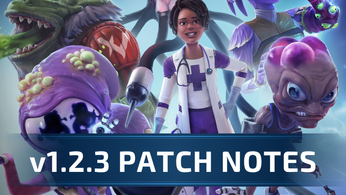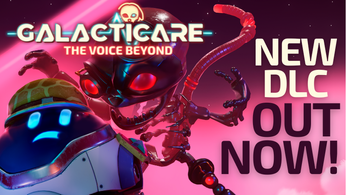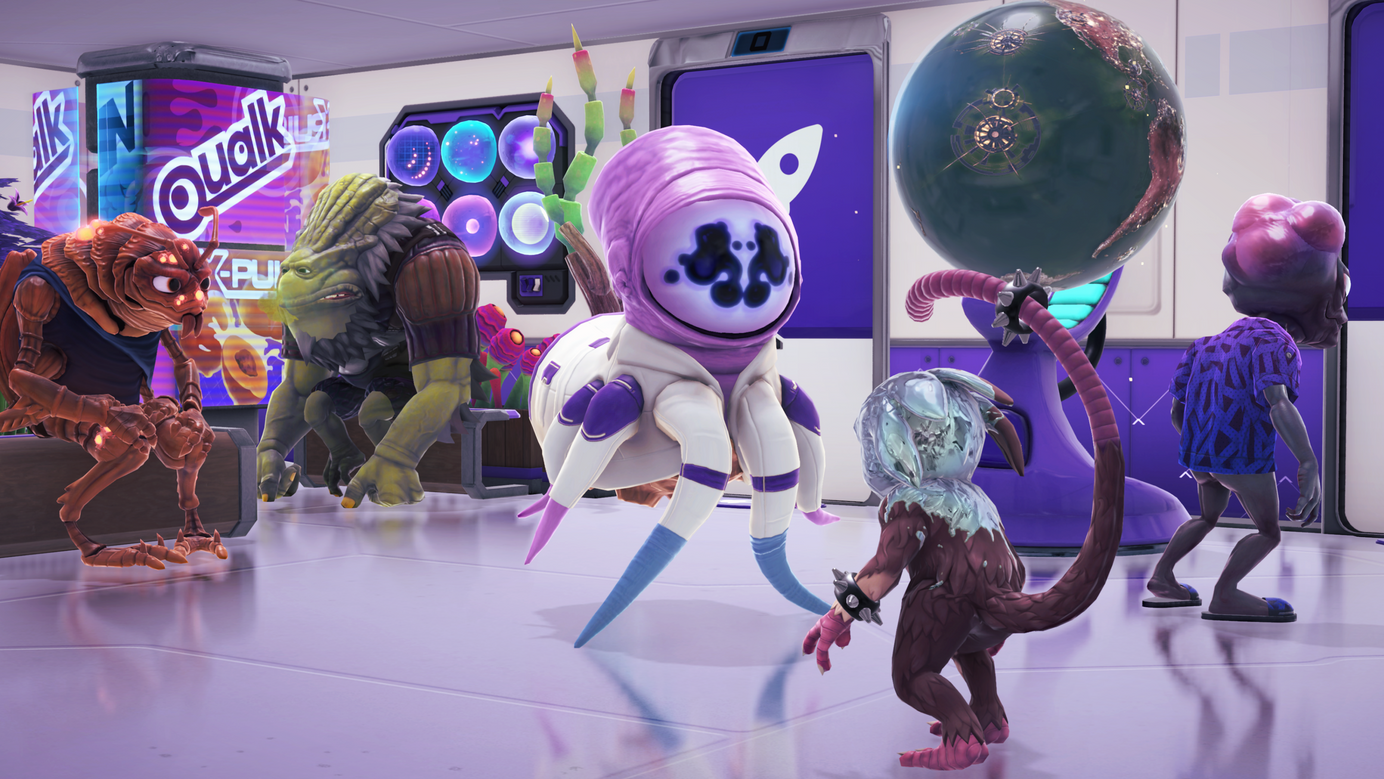
The Anatomy of an Alien
Designing a wide variety of different alien species turned into a bigger challenge than expected. Who knew space could feel so constrained at times? Dive into the gameplay, visuals and narrative of our diverse cast!
Greetings director,
Welcome to the first of many deep-dives that we’ll be sharing on this blog. Today’s topic is… aliens.

The opportunity to create and make use of a wide variety of alien species was one of the main reasons we decided to set Galacticare in space - and it goes much deeper than just how they look.
It was particularly important to us that these aliens went beyond simple reskins of a typical humanoid. We wanted to ensure they had deep and meaningful differences - narratively, mechanically and, of course, visually.
A quick caveat before we continue - the species names mentioned in this post are not yet final and might change over the next few months.
Gameplay
Every species has a number of unique gameplay features associated with them, the most important of which are species traits and species desires. These aspects apply to every member of the species - both patients and doctors!

The Kouber Baly (pictured above) trait is Saurian Serenity, which reduces health and needs deterioration by 75% when they are waiting (for treatment, for the toilet, or for snacks), and also removes any negative mood impact associated with long queues.
This allows you to interact with the Kouber Baly in a few interesting ways; whenever you have a particularly long queue you can feel comfortable pushing these patient patients to the back of the line. They’ll never get mad about it, and are unlikely to suffer too many ill-effects (they aren’t immortal, though, so be sure to keep an eye on their health bars!)
When it comes to Kouber Baly doctors, feel free to assign them to lesser-used rooms, as their needs aren’t going to needlessly drain away while they wait between treatments.
A key goal when designing these traits was to ensure they are a layer of positive, opt-in depth. We don’t ever want you to feel penalised for hiring loads of Tenki because you think they’re cute (or for never hiring any Vizarj due to your irrational fear of tentacles). Whether you choose to engage with these traits or not, they’ll never negatively impact your hospital.
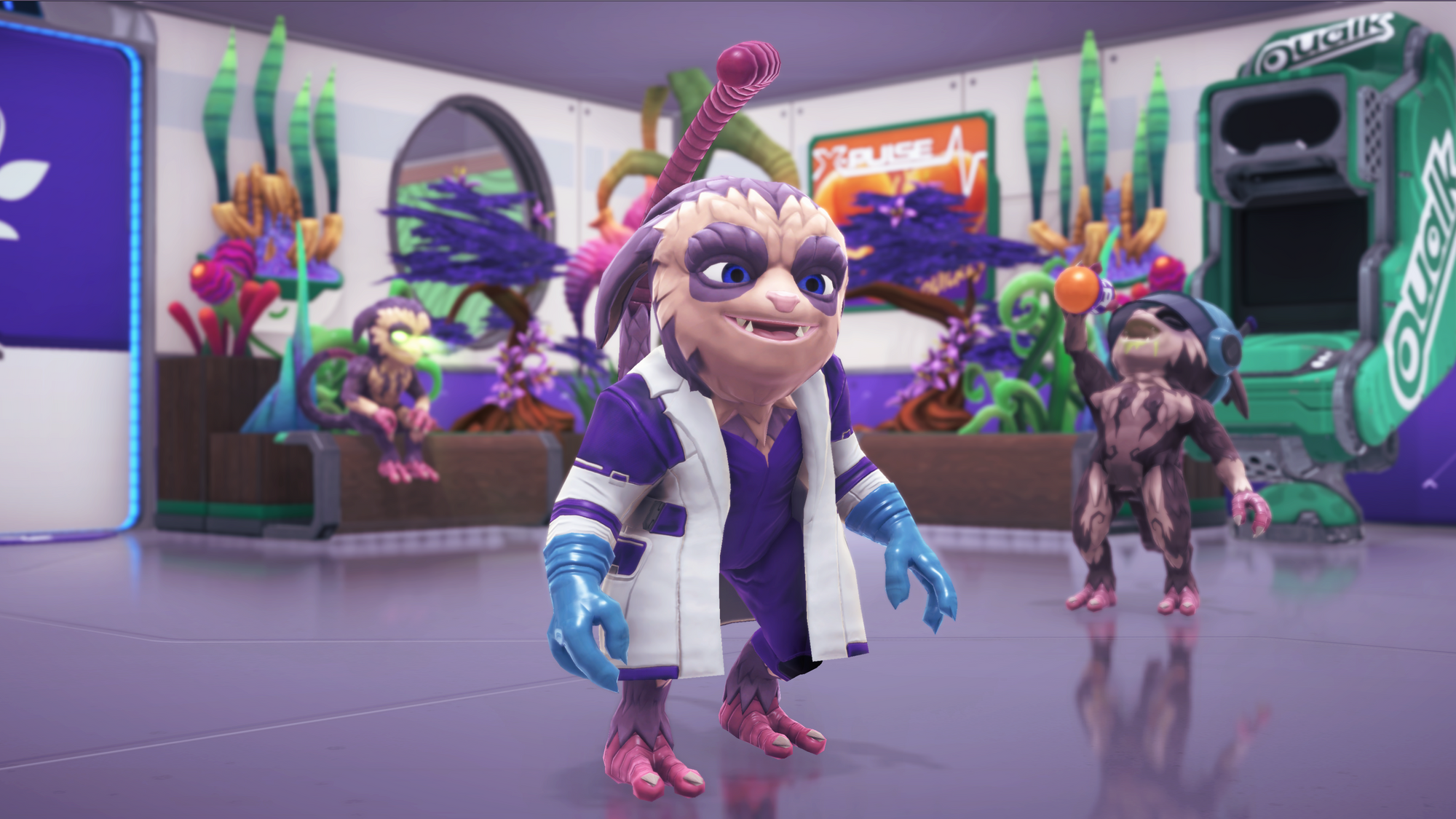
Next up, let’s take a look at desires. Every species has two unique desires, which can positively (and negatively) impact their mood depending on how well you are fulfilling those requirements throughout your entire hospital.
For example, the two Tenki desires are Well-Maintained Rooms and Upgraded Rooms. If your hospital is full of upgraded, well-maintained rooms then all Tenki will be very happy - but obviously this will also directly improve the overall operation of your hospital.
There are two key aims for this system. Firstly, it allows us to directly inject the culture and personality of each species into the game systems. Secondly, it also acts as a way for the game to nudge you to improve your hospital in a variety of subtle ways. While every species desire conveys a direct mood benefit (or penalty) to an individual species, fulfilling it will also generally improve your hospital.
On the flipside, if your hospital is full of nearly broken rooms with no upgrades, you’re going to have some very sad Tenki (and a very poor hospital.)
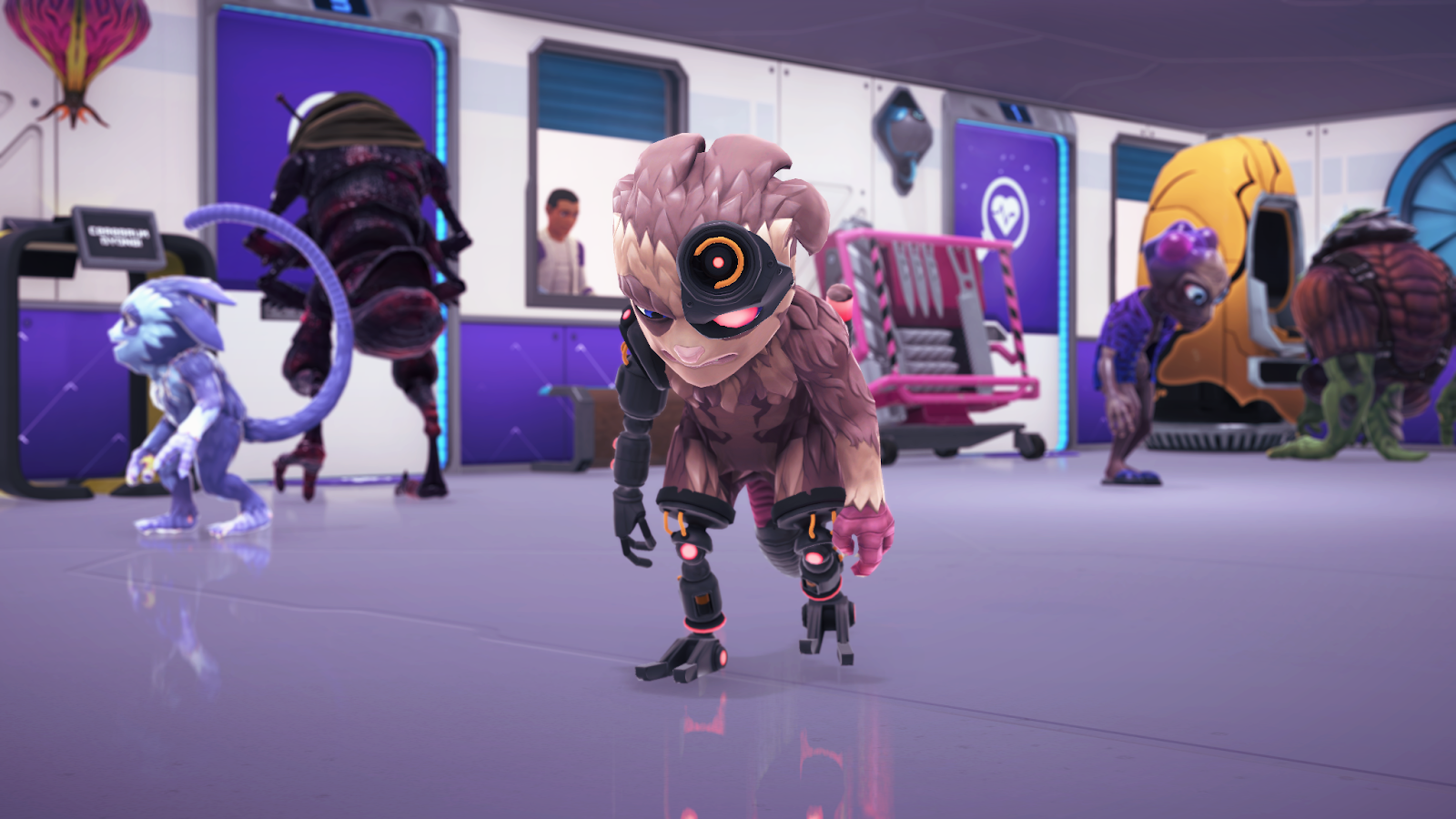
Throughout your galactic journey you’ll encounter a wide variety of these desires, such as the Kouber Baly pining after spacious treatment rooms, the Xil wanting easy access to bins for snacking, and Humans yearning for simple decorations that remind them of home.
Visuals
Next up, the visuals. As mentioned at the top, we really wanted to push the visual variety as far as we could (and we very much wanted to avoid creating an array of humanoids with different foreheads). Legs for arms? Yes. Tentacles? Absolutely. Quadruped movement? Why not.
While taking visual variety to the extreme was desirable, it wasn’t always practical. We had a huge number of technical, production and design considerations to keep in mind whilst we designed our species.
For example, something as simple as size was a huge (sorry) problem to solve. We wanted a decent range of between our largest and smallest species, but we also needed to ensure that they are both able to interact with all of the same objects (benches, vending machines, toilets, doors) and treatment rooms.
On the larger end of the spectrum we have the Kouber Baly (our widest species) and the Dyonai (our tallest species), and on the small end we have the Tenki (also pictured above), who’s quite adorable in comparison.

Character size also impacted development in other ways.
Pathfinding logic in a game with this many on-screen characters can be really tricky - and that’s before you introduce multiple sizes. Our smaller species are able to find their way through smaller gaps between objects, whereas larger species may need to take the scenic route. This is something we can explore more extensively in another blog post if there’s interest!
As Galacticare is a hospital management game, most of the characters present are patients. And they have one job: to be sick.
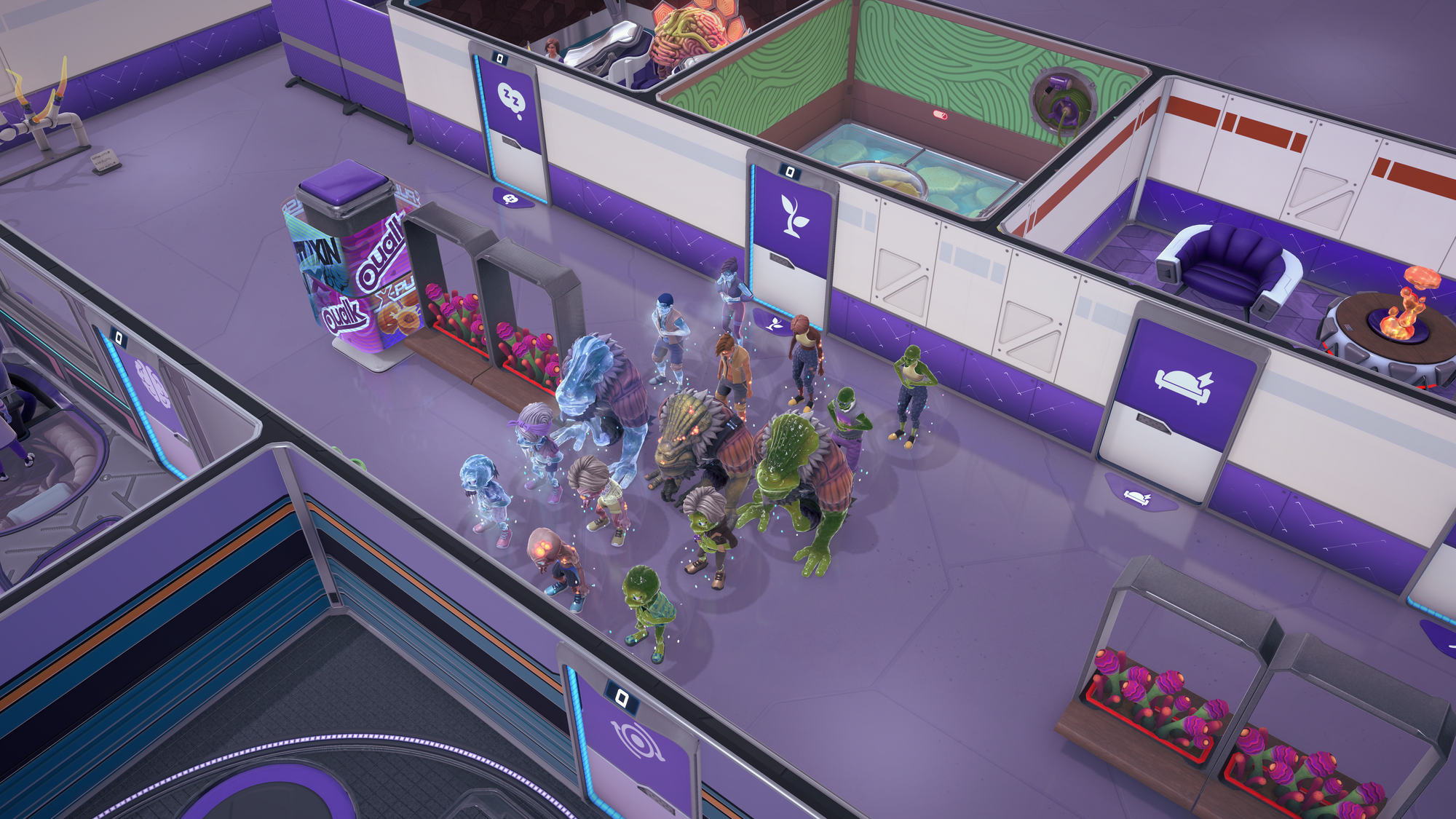
This means that their person needs to be able to act as a canvas for the many conditions they might be suffering from. It’s important that both their body and clothing allows for a good amount of skin to be visible from the player’s top-down view in order to ensure their conditions can be easily identified.
Creating distinct species with such varied anatomies let us design conditions unique to each. The Tenki, for example, sometimes get their tails in a twist.

Let’s take a closer look at one of our species: the Xil. The insect character archetype is a staple in science fiction, and there’s a ton of rich reference material that we were able to draw from, including the Annelids (Men in Black), the Prawns (District 9), the Gromflomites (Rick and Morty), and many more.
The Xil were originally developed in parallel with a (now-scrapped) canine-themed species based on Laika, one of the first animals in space.
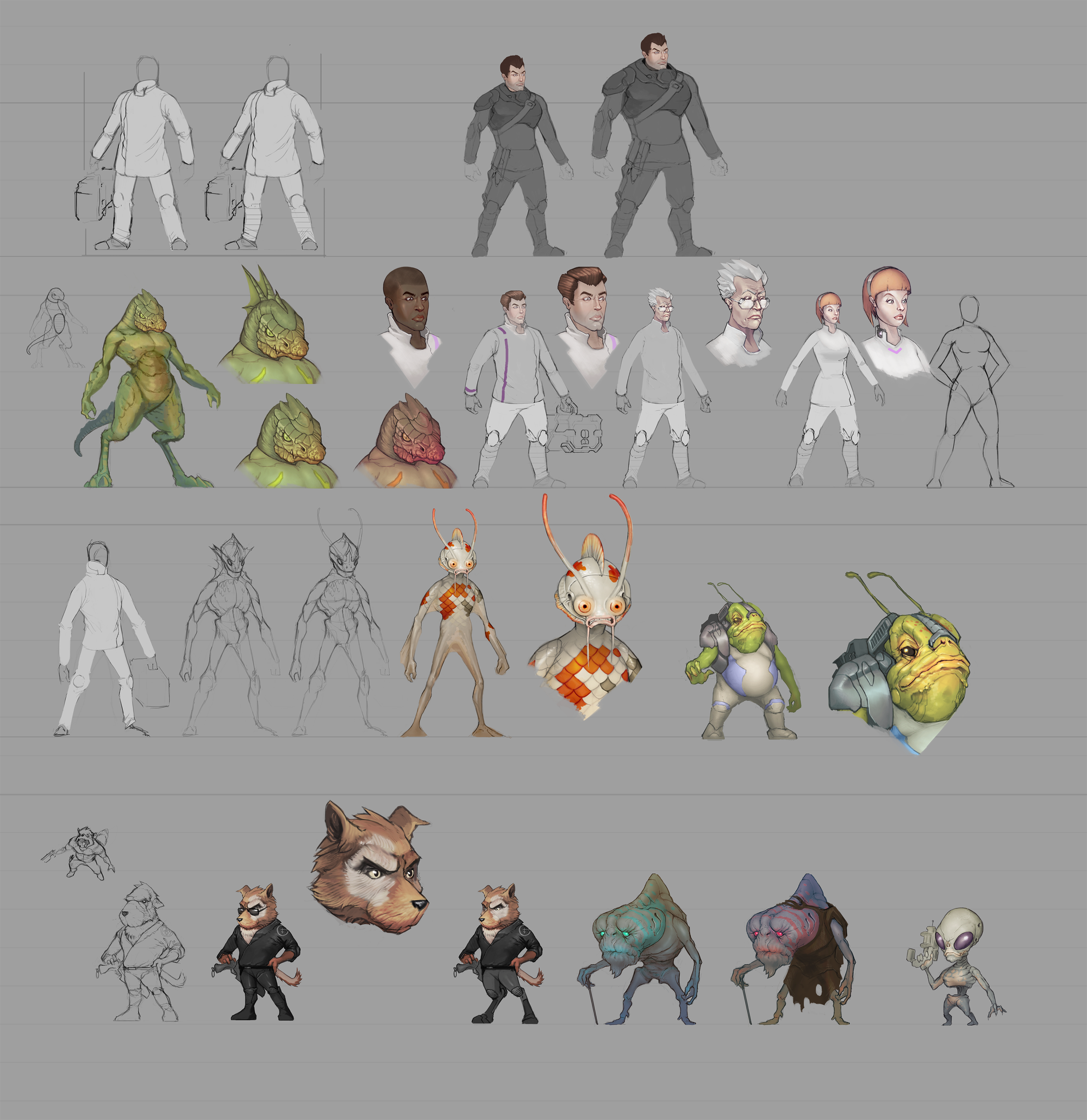
The premise was that the canine species had been caught in an Ohde experiment, elevating them into an advanced, bipedal and highly-intelligent species. However, a flea was accidentally mutated as well, leading to an equally intelligent, rival insect alien species.
While the Xil's lore has gone through a lot of changes since then, you can still see the influences of the original concept in their final design.

Their development brought up a number of questions; how creepy do we go? How much ‘silliness’ in the design will compromise the depth of a species? What’s going on between the legs of the Gromflomites?
The Xil gave us an opportunity to push a ‘less cuddly’ aesthetic, but it was important that this didn’t go too far and that the Xil were still likeable, engaging and charismatic. We want the player to like these alien species, as well as find their biology and backgrounds interesting! As shown in the iterations, injecting a cartoony / dopey side took the edge off the more serious adaptations, but it also diminished the Xil’s credibility as a key member of the Galacticare universe.
Over time, with the changes to their face, eyes, and antennae, we landed on a design that we felt struck the right balance between expressiveness, creepiness, fun, and flavour, without compromising the depth of their cultural background.
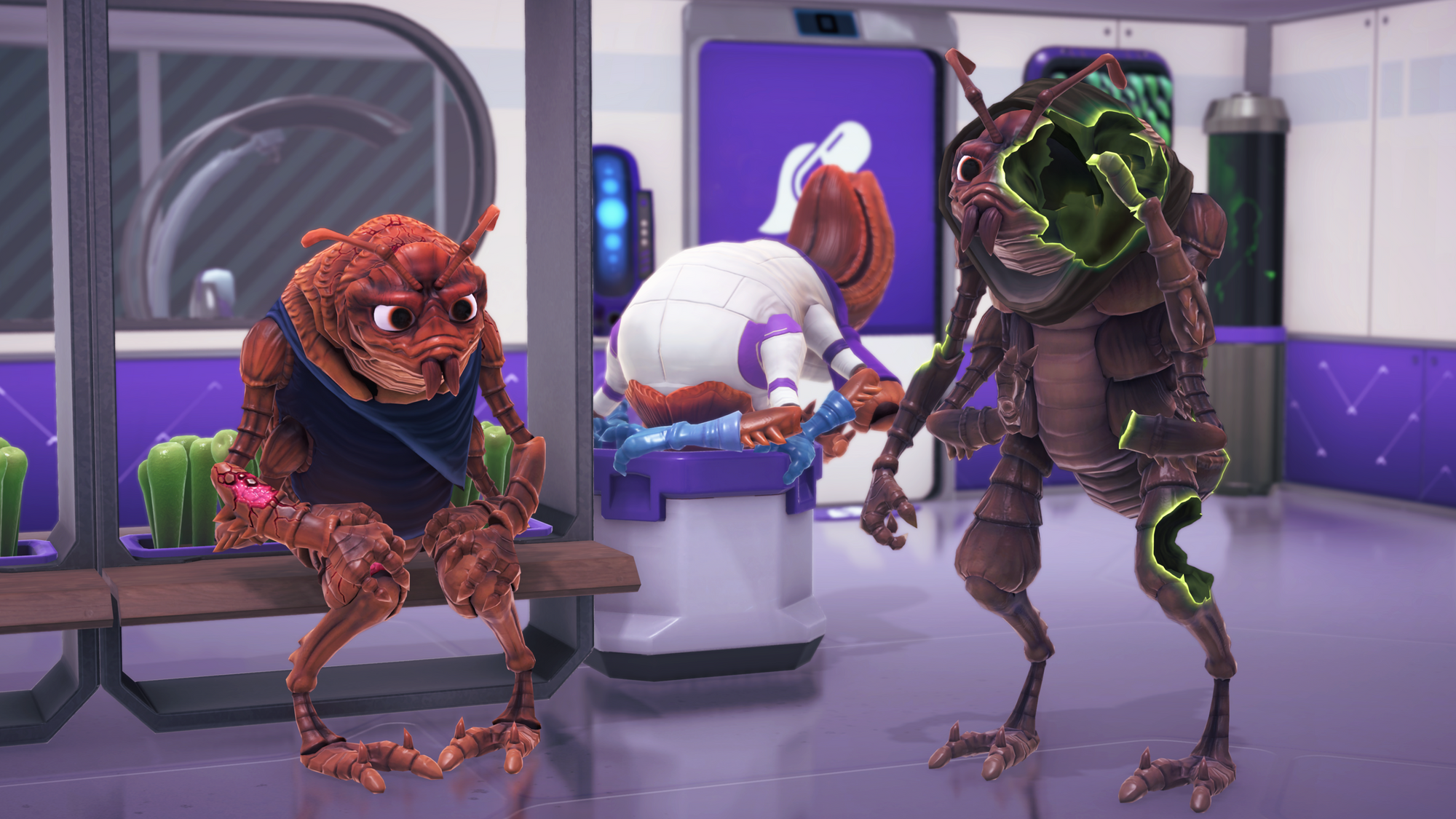
Narrative
Finally, we wanted to tie everything together by creating rich and contrasting cultures, histories and physiologies for each of our species. This covers everything from their system of government and approach to family to their relationship with food and understanding of the concept of gender.
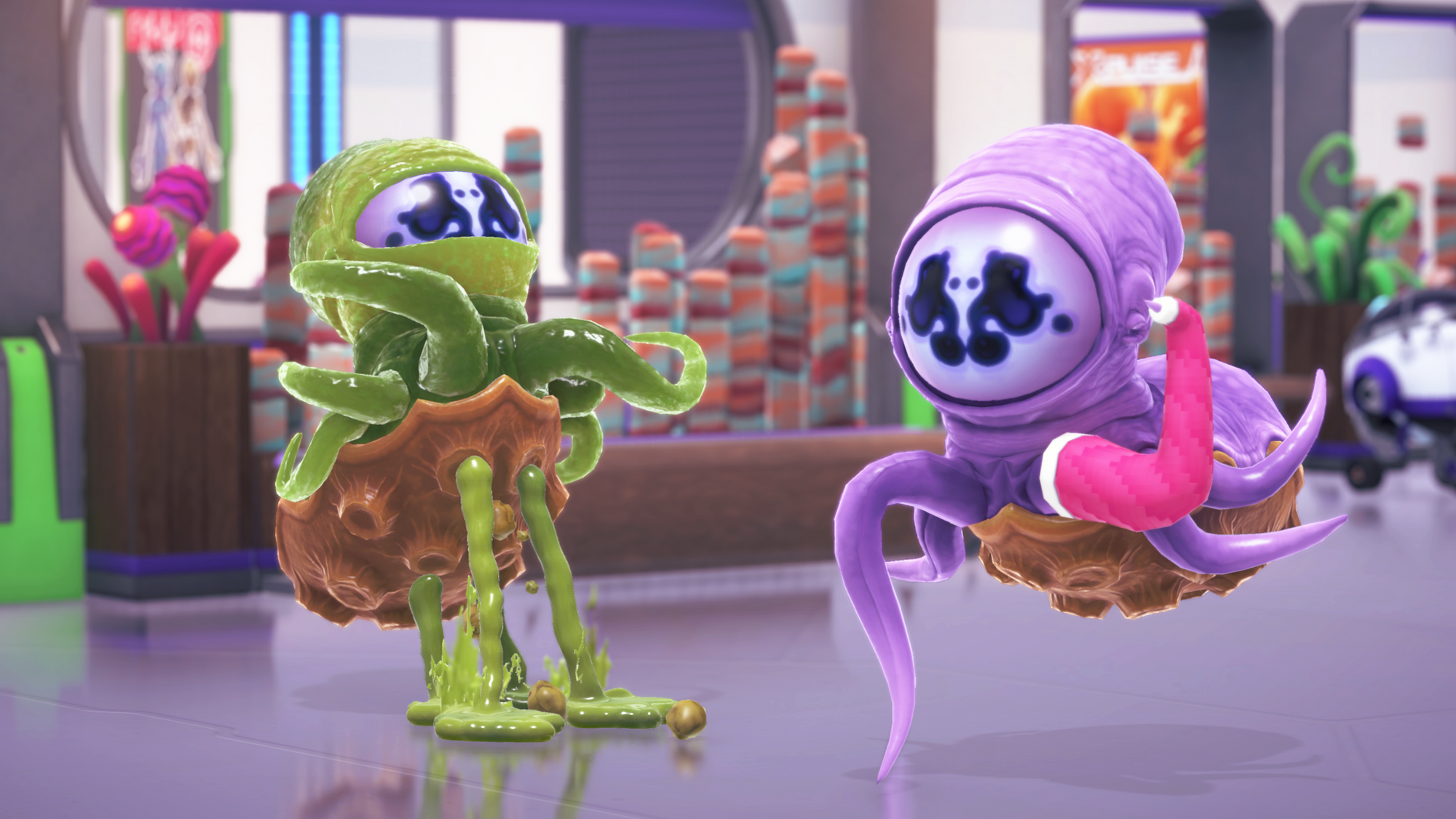
The Vizarj, for example, have a very alien approach to family. When a Vizarj reaches the stage where it can no longer record new memories, it begins the final stage of its lifecycle, which is a unique form of mitosis in which one Vizarj will split into two new and distinct beings. (This process is even represented in the game by a special Vizarj-only condition - we’ll talk more about that at a later date.)
...the natural “death” of a Vizarj and subsequent birth of their progeny is something to be celebrated.
These two new Vizarj (known as the progeny) each inherit half of the memories, personality, and name of their parent (known as the progenitor). This also means that they have one quarter of everything that made up their progenitor’s progenitor, and so on. All Vizarj carry this ancient genetic memory; fragments of their history from a bygone era which become ever-harder to decipher as each new generation is born.
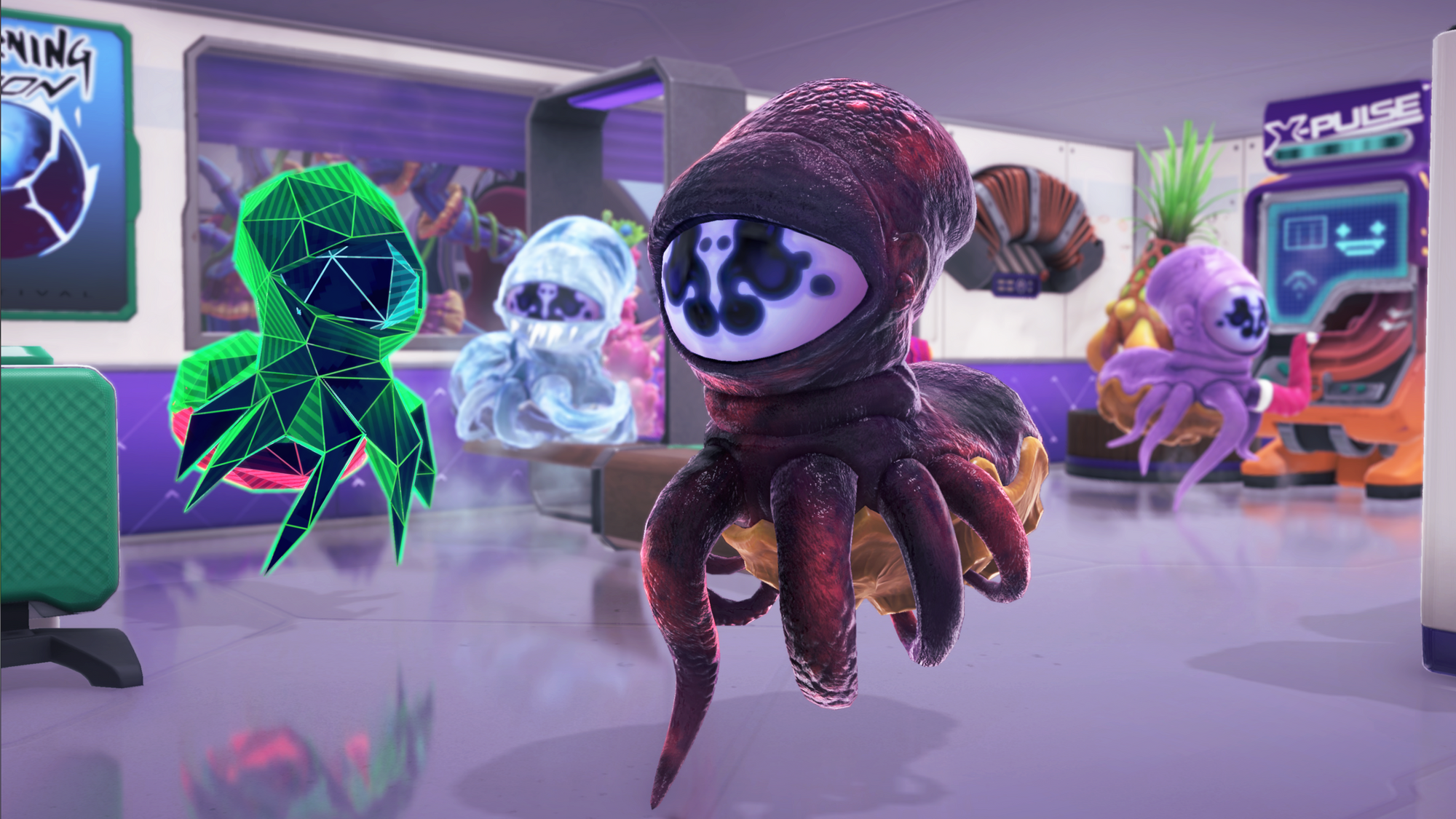
This nature makes their approach to the concepts of “self” and “death” very different. No Vizarj is truly their own person, nor do they ever truly die of old age. The unnatural death of a Vizarj is something that’s seen as a great tragedy, as an entire lineage of memory and personality is lost - not just this most recent iteration.
On the other hand, the natural “death” of a Vizarj and subsequent birth of their progeny is something to be celebrated. Because this reproductive cycle is entirely self-driven, the Vizarj never developed any concept of family, gender, or romance. They roam their home planet in loose tribe-like groups, but they are nothing like anything seen in human society.
As you grow your relationship with each species, you’ll not only unlock unique rewards through the reputation system (to be discussed at a later date!), but you’ll also get the opportunity to learn more about their society, history, biology, and how exceptionally weird they are.

That’s all from us for today. We hope you enjoyed peeking behind the development curtain, and learning about some of the problems and goals we’ve been tackling along the way. Next time, we’ll dive into the music of Galacticare - hope to see you then!
Until next time Director,
- Brightrock Games
Don’t forget to join us on Discord!
Want to help us improve Galacticare?
We're starting to ramp up testing and, just like we did with War for the Overworld, we'd love to get the community involved in giving us feedback on bugs, balancing, and everything else in order to help make our game as good as it can be.
Recently we've opened up very pre-early alpha builds to a small group of community testers, and we'd like to slowly grow this group over the coming months. If you'd like to get involved please head on over to our sign-up form.
Brightrock Games Newsletter
Join the newsletter to receive the latest updates from the studio straight into your inbox.



